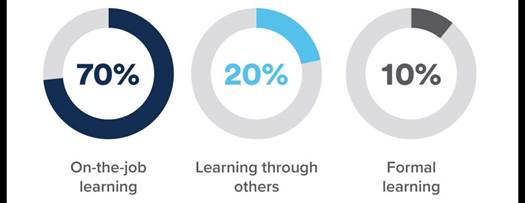“Jeff, how do you find such beautiful pictures for your newsletter?” Setting up a quick Zoom session from Canada to New Zealand, within ten minutes my friend Diana was on her way to brighter images at zero cost (thank you unsplash!).
We’ve all done it. Need help? Phone a friend. Or text, IM, email. Virtual neighbours have answers at their fingertips. Even if answers are incomplete, it’s often enough to get them where they need to go. Heck, we can even capture screen images with pointers, share screens, and take over someone else’s computer to help out (handy when I need the Microsoft Team to fix email issues).
Contrast that with the vast majority of corporate training. It’s horrible. PowerPoint continues to rule with monotone voiceovers and 90’s clipart. Animations are rolled out as a replacement for interactivity.
True learning that transfers to the job requires context and experience. We opt to phone a friend before looking to training because we can express what we need in context that’s specific for ourselves, and peers can respond in kind with additional examples that relate. That’s how the 70-20-10 model came about, looking at how people learn:

Informal or social learning is interactive. It’s hands-on. It’s fast. But it’s not perfect either. It can quickly disseminate myths and dated information, reinforcing workarounds and shortcuts that damage the organization.
What’s the answer? Inform the informants.
Every organization has ‘go to’ people that know answers. Build that network of change agents, power users, champions or some version of a “League of the Wise” (cool names preferred) and use them to farm out the best you can offer in tips, newsletters, documentation, expert contacts, and formal training.
With The Salvation Army we skipped the traditional route of asking managers to nominate change agents when rolling out a new system. We went directly to the front line, presented the challenge and offered participants to get the latest, inside information FIRST. We offered the opportunity to be local ‘know-it-alls’.
People brought their peers, their managers, and their pets. I’m not exaggerating. We rolled out the best information and training from our experts directly to those who wanted to spread the word. It worked incredibly well!
Good learning requires good marketing. Use the power of the social network to drive the best in education. Need help? Let me be your neighbour!
Thoughtfully yours,
Jeff



